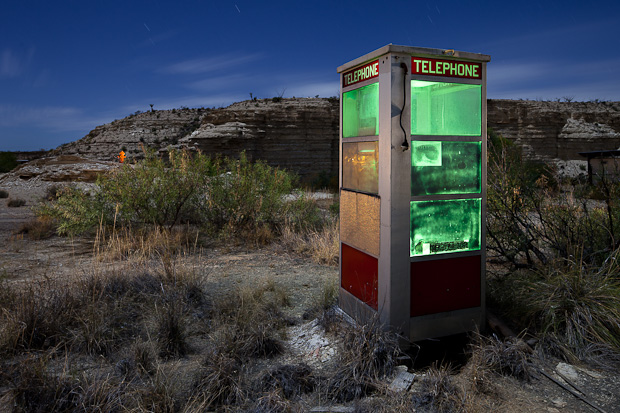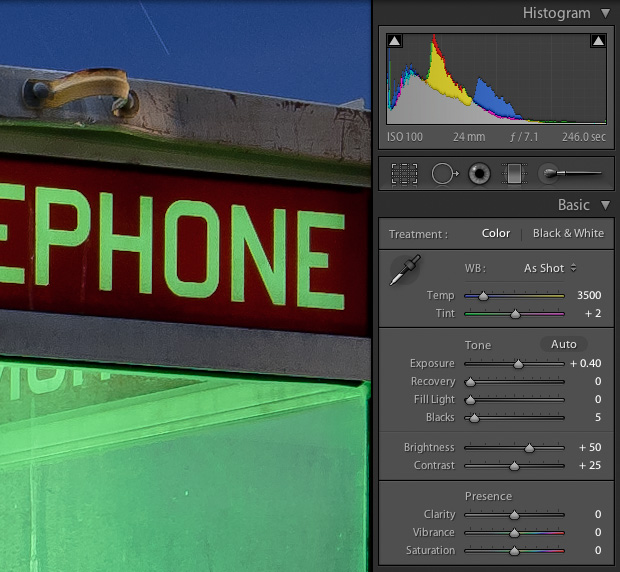Q: “When I process a RAW file, I use the RAW image processor in Photoshop. I then save it as a TIFF file (and then to a JPEG for clients and stock agencies). This already seems like so many steps. Why would I want to use Lightroom?”
A: Photoshop wasn’t designed to work with camera RAW files – it was designed to work with film scans. IMO, the Camera RAW plugin and Adobe Bridge represent an inelegant approach to modernizing an application based on 1980’s technology.
Lightroom is the new Photoshop written from the ground up with Camera RAW imaging in mind. It’s a paradigm shift. With it, we inch closer to a workflow that allows us to do everything (adjustments, retouching, printing, etc) directly from the camera RAW files, or our “Digital Negatives” as I like to call them, without cumbersome TIFF and PSD files. JPEGs are a temporary format designed for transportation and internet use. Maintaining a collection of Digital Negatives without all the other files is simple and elegant, takes up a lot less drive space and simplifies file management and archiving.
If and when you choose to become a Lightroom user, I’d encourage you to use it to import images directly from the camera’s memory card, all the way through your workflow including printing, client file delivery and website creation. Think of Photoshop as a temporary retouching tool that you’ll one day be able to retire once Lightroom gains those more extensive capabilities. If you need to goto Photoshop, do so quickly and return back to Lightroom for everything else (printing, client file delivery, etc).
Some people’s work revolves around Photoshop and image compositing. Maggie Taylor and Dan Burkholder are two friends whose work I admire whose creative process has been deeply engrained in Photoshop for decades. Lightroom isn’t necessarily for them, and that’s OK. Photographers that don’t do much compositing or extensive retouching are better off adopting Lightroom for the majority of their workflow, even if it involves Photoshop at times. Those that say “Why use Lightroom when Photoshop does more?” just don’t get it. It’s about simplicity and elegance. It’s about rethinking the whole process of working with images. Lightroom isn’t for all everyone but it represents the future for 90%+ of DSLR photographers. Photoshop will remain a powerful tool for those doing extensive retouching/compositing and for non-photographers like 3D illustrators, architects, graphic designers, etc.
The elegance and simplicity of Lightroom’s workflow has changed my whole relationship to photography. I’m able to spend less time behind the computer and more time behind the lens. I used to spend hours and hours perfecting an image in Photoshop but now I do so behind the camera. When I’m shooting, I strive harder to get it right in-camera because I want to avoid using Photoshop at all costs. Instead of saying “Oh I’ll fix that in Photoshop” I just shoot something else or I’ll work to perfect the lighting. I spend less than 5% of my time in Photoshop now and look forward to the day when I can retire it altogether.
Is it real?
15 years ago I had an exhibition of palladium prints and it really bothered me when someone asked “What did you do in Photoshop? Are these real?” These days when people ask these questions at my exhibitions my response is “all of these images were made completely without the use of Photoshop.” And that means something. For the viewer or print buyer, it’s powerfully confidence building. Someday Lightroom will have a lot more extensive retouching capabilities than it has today. But for now, saying that an entire exhibit was printed entirely with Lightroom means that the retouching is minimal if at all, and that no compositing was done. It looked like that in camera. Some mastery of the craft is evident. It has integrity – similar to in-camera transparency. And it’s “real” – however the viewer is defining that. :-]


Developed in LIghtroom using almost no adjustments. Yes, it’s real. No Photoshop work at all.

Hi Jose. Even though they are based on the same engine, the differences between ACR and Lightroom are quite substantial, IMO. Similarly, we might say that Dallas and San Francisco are both American cities (and have that government in common) but living in one or the other can be a very different experience!
LR can export TIFF for file client delivery, and it can do so with print sharpening watermarking, etc with greater ease and elegance than Photoshop. Give it a shot! Processing your images completely without Photoshop can be a great. liberating feeling. And it says something. Something positive about your work.
Hello: I simply don’t undestand the diference between ADOBE Camera Raw (ADOBE Photoshop plug-in) and ADOBE Photoshop Lightroom as you say.
You can be lost in the menu forest of Photoshop, but have to know what are the ones that you need to optimize your image without weaken it. And you have not softproof capabilities in LR.
And what if you need to send a TIFF to a printer provider? Do you send your DNG file?
Lightroom is fine, cute, elegant and all what you want, but at this day (without softproof) is the affordable version of Adobe Photoshop/Adobe Camera Raw Plug-in.
“Lightroom provides all your essentials in one intuitive package.” From http://www.adobe.com/products/photoshoplightroom/
This post inspired me to start experimenting with Lightroom. It is still a steep learning curve, but I am beginning to see the advantages of working this way. Thanks!
Scott it is nice to see that your work is still beautiful while not standing still.
Thanks John – great to hear from you! Best to you and yours.
[…] This post was mentioned on Twitter by Penny De Los Santos, Scott Martin. Scott Martin said: Why I don't use Photoshop, and an answer to "Is it Real?" http://bit.ly/gYjMmS […]